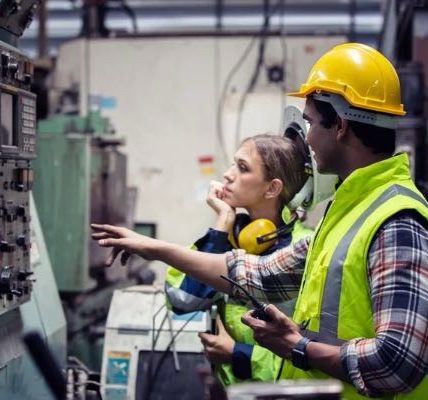Smart home technology is rapidly evolving, transforming the way homeowners manage energy consumption and indoor comfort. Among the many innovations, smart thermostats are becoming a must-have in modern homes. These devices do more than just regulate temperature—they optimize energy use, provide remote access, and integrate seamlessly with other smart home systems. As energy efficiency becomes a priority, builders and homeowners alike are making smart thermostats a standard feature in new homes.

What Are Smart Thermostats?
Smart thermostats are advanced temperature control devices that allow users to manage heating and cooling systems through automation, AI-powered learning, and remote access via smartphones. Unlike traditional thermostats, which require manual adjustments, smart thermostats learn user preferences, adjust temperatures accordingly, and provide real-time data on energy usage.
The Rise of Smart Home Integration
The demand for smart home technology is growing as homeowners seek greater convenience, automation, and energy efficiency. The Internet of Things (IoT) has revolutionized household management, with these thermostats playing a central role. AI-powered systems can now analyze behavioral patterns and external weather conditions to adjust indoor climates automatically. This level of automation not only enhances comfort but also contributes to significant energy savings.
Benefits of Smart Thermostats in New Homes
Energy Efficiency and Cost Savings
Smart thermostats are designed to optimize energy use, ensuring that heating and cooling systems run only when needed. According to the U.S. Department of Energy, homeowners can save up to 10% annually on heating and cooling by using programmable thermostats. By learning user habits and making automatic adjustments, smart ones help cut down on unnecessary energy consumption.
Remote Control and Automation
One of the biggest advantages of these thermostats is the ability to control them remotely via a mobile app. Whether at work, on vacation, or simply in another room, homeowners can adjust the temperature with a simple tap on their phone. Many models also integrate with voice assistants like Alexa, Google Assistant, and Siri, enabling hands-free control.

Personalized Climate Control
Smart thermostats use AI-driven learning to personalize temperature settings based on user preferences and daily routines. Over time, they adapt to habits—like lowering the temperature at night or increasing warmth in the morning—without manual input. Some models even use motion sensors to detect when rooms are occupied and adjust temperatures accordingly.
Environmental Impact
By reducing unnecessary energy consumption, they contribute to lowering a home’s carbon footprint. With rising concerns over climate change, energy-efficient appliances are becoming essential for sustainable living. Homeowners who install these not only benefit from cost savings but also contribute to global energy conservation efforts.
Integration with Other Smart Home Devices
Smart thermostats seamlessly integrate with other smart home systems, such as smart lighting, security cameras, and automated blinds. This interconnected ecosystem allows homeowners to create energy-efficient routines, such as automatically lowering the temperature when the home security system is activated or adjusting settings based on natural light levels.
Why Smart Thermostats Are Becoming a Standard Feature
Builders and developers are increasingly including smart thermostats in new home designs due to their growing popularity and efficiency benefits. Many government initiatives also promote energy-efficient homes by offering tax incentives or rebates for installing smart climate control systems. As energy efficiency regulations become stricter, having a smart thermostat is quickly shifting from an optional upgrade to a standard feature in modern housing developments.

Future of Smart Thermostats in Home Automation
The future of smart thermostats looks promising, with continuous advancements in AI and home automation. Future models are expected to incorporate even more sophisticated learning capabilities, such as analyzing weather forecasts, real-time electricity rates, and predictive maintenance alerts. As smart homes become more interconnected, these thermostats will play an even greater role in creating energy-efficient, sustainable living environments.
Smart Thermostats Redefine Home Climate Control
Smart thermostats are redefining home climate control by offering energy savings, convenience, and seamless integration with other smart devices. As builders incorporate these systems into new homes, and as energy efficiency regulations tighten, smart thermostats are quickly becoming a standard rather than a luxury. Their ability to enhance comfort while reducing energy consumption makes them an essential part of modern home automation.




